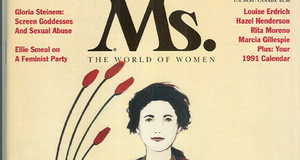Revisiting Footbinding: The Evolution of the Body as Method in Modern Chinese History
By
2014, Vol. 6 No. 10 | pg. 2/2 | « Wang’s focus on the linguistic fetishization of footbinding through a prominent literary tradition shifted the focus originally initiated by Fan from bodies as always in active resistance to pain to bodies as an aesthetics and culmination of feminine beauty. However, the static nature of women’s emotions in writing and painting posed valid historical questions: How were the women’s voices heard? To what extent did writings reflect the authenticity of their voices? And to what extent did literary tradition describe the discursive space in which female embodiment and subjectivity were formulated? These questions illustrated the limitations to Wang’s study. If women only understood their bodies as mere reactions to male’s fetishism of small feet, the aesthetics involved subsequently expressed a discursive limit in which different forms of female embodiments could not be exposed and therefore obstruct our understanding of true subjectivities within this space. This discursive limit also presented a theoretical and methodological pitfall to feminist scholarships concerning the bodily practices of footbinding: how are historians able to capture the full complexity of footbinding as a female practice, male and female fetishes, and the enlightenment movements in the early twentieth-century threatening its continual existence? These scholarly questions were the locomotives propelling feminist studies to re-conceptualize the body and footbinding in modern China in the following years. The year 2005 was a field-defining moment for scholarships on footbinding and the body in China with Dorothy Ko’s highly acclaimed monograph Cinderella’s Sisters, A Revisionist History of Footbinding. Such exhilarating moment of scholarly achievement was acknowledged when this book won the Joan Kelley Memorial Prize from the American Historical Association that year for the best book in women’s history and feminist theory. In this giant work of scholarly research, Ko uses a wide range of primary sources, including a wealth of visual and textual documentations that had never been analyzed before.The argument was daring and provocative: all the histories that had been written on the topic were the histories of anti-footbinding, filled with ruthless condemnation of a social practice so intimately linked to Chinese women’s understanding of the self, womanhood, and their bodies. Ko therefore determined to write an alternative history of the body so as to make sense of the power that conventionalized this female practice and “locate the woman’s agency and subjectivity not only in the world that the pain destroyed, but also in the subsequent unfolding and creation of meanings: for each woman, footbinding was an ongoing process, just as each body was located in a specific time and place. Therein lies the possibility of a history.”5 There are two reasons why Dorothy Ko’s book was such an important contribution to the field of the history of women, gender and sexuality, and remained an exemplary model for feminist scholarships in Modern Chinese studies to follow. First, her comprehensive re-working of a framework that employed an analytic distance from the subject was courageous and admirable. Footbinding, as a traumatic topic, had traditionally induced scholars to make subjective assessments characterized by indignation. As Ko had elsewhere asserted, this was a study of women who bound their feet for many reasons that eluded our knowledge, not a study of how we applied the understandings of our bodies to make sense of their struggles. On this premise, footbinding was not universally structured and could not therefore be theorized in a totality that generalized the whole practice. This was indeed reflected through women’s active participations in the custom for a multitude of reasons: beauty, social status, fetish, economics, and even the Freudian notions of desires and ambitions. Footbinding could not be situated in any binaries of “black-and-white, male-against-female, and good-or-bad way of understanding the world.”6 It is a complex dialectic of female embodiment involving a variety of strategic modes of responses with contested meanings to bodily practices that transformed through multiple spatiality, temporality and contextuality. Second, perhaps the most striking innovation of this work was a theorization of the temporal bodies that fluctuate in the flow of history—bodies produced by historical progressivism and simultaneously marginalized by it, bodies without voices, entrapped in the loops of time flowing by. Dorothy Ko ingeniously paid attention to these particular women’s bodies that lied in the midst of aggressive temporal shifts, those possessed by women who stubbornly resisted the discourse of progress and refused to comply because of their belief in the achievements of womanhood through footbinding. This form of female subjectivities, according to Ko, “arose from an ambiguous space between individual and national histories”7 and dictated the fact that “no state decree or social movement can truly end footbinding until the individual lives have expired one by one.”8 To further our understandings of female embodiment, scholars must deconstruct this ambiguous space—a temporal construct that had been left unexamined by revolutionary progressivism. Dorothy Ko challenged this existing paradigm and wrote a revisionist history that explained how pain created meanings for womanhood and unfolded the concepts of the self and subjectivities. This shift in the historiography of footbinding, remarked by Dorothy Ko’s new methodology, empowered current feminist scholarship and the way in which scholars conceptualized women’s bodies in modern Chinese history. The temporal bodies that resist to the flux and flow of history will always be there, next to us, and ready to tell different narratives of power, history and politics. It is important that scholars captured these stories, saving them from the aggressive force of supersession. In modern Chinese studies, the body, through a concrete example of footbinding, experienced a methodological shift from an agency of resistance to a form of aesthetics, and ultimately a marker of temporality that called for attention from feminist scholars to write a history that defied totality thinking to examine the full-fledged picture of women’s agencies and subjectivities. This approach, I believe, is already giving rise to a new domain of scholarships on the body where female subjectivities are investigated at the intersection of individual, national, and even global history. An example of this trend includes Weijing Lu’s monograph published in 2008 titled True to Her World: the Faithful Maiden Cult in Late Imperial China. In this study, she argues against the state’s dominant historical narrative that stereotyped the faithful maidens as signs of national burden and backwardness.9 By looking at individual stories of these maidens, Lu teased out the women’s agencies in how they managed their bodies and make decisions regarding their lives against all state decrees. Another study published in 2011 by the sociologist Eileen Otis examined how the force of capitalism shifted the nature of female body works from serving for the state revolutionary ideology to individual demands and consumptions.10 As these studies are challenging a long-existing paradigm of revolutionary narrative, I predict that feminist scholarships in the next few years will continue to build upon this perspective by delving deeper into that ambiguous space of individual and national histories to unearth new bodily aspects of female agency, subjectivity, and embodiment. ReferencesHershatter, Gail, et al, “Chinese History: A Useful Category of Gender Analysis,” American Historical Review, December 2008, pp. 1404-1421 Ko, Dorothy, Cinderella’s Sisters, A Revisionist History of Footbinding, Berkeley: University of California Press, 2005 Wang, Ping, Aching For Beauty, Footbinding in China, Minnesota: University of Minnesota Press, 2000 Fan, Hong, Footbinding, Feminism and Freedom: The Liberation of Women's Bodies in Modern China (Sport in the Global Society, New York and London: Routledge, 1997 1.) Gail Hershatter and Wang Zheng, “Chinese History: A Useful Category of Gender Analysis,” (American Historical Review, December 2008), pp. 1404 2.) Wang Ping, Aching For Beauty, Footbinding in China, (Minnesota: University of Minnesota Press, 2000), p. 4 3.) Ibid, p. 225 4.) Ibid, p. 228 5.) Dorothy Ko, Cinderella’s Sisters, A Revisionist History of Footbinding, (Berkeley: University of California Press, 2005), pp. 1-2 6.) Ibid, p. 227 7.) Ibid, p. 12 8.) Ibid, p. 12 9.) Weijing Lu, True to Her World: the Faithful Maiden Cult in Late Imperial China, (Stanford: Stanford University Press, 2008) 10.) Eileen Otis, Markets and Bodies: Women, Service Work, and the Making of Inequality in China, (Stanford: Stanford University Press, 2011) Suggested Reading from Inquiries Journal
Inquiries Journal provides undergraduate and graduate students around the world a platform for the wide dissemination of academic work over a range of core disciplines. Representing the work of students from hundreds of institutions around the globe, Inquiries Journal's large database of academic articles is completely free. Learn more | Blog | Submit Latest in History |


















